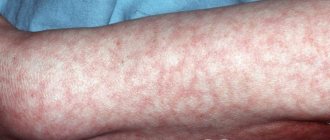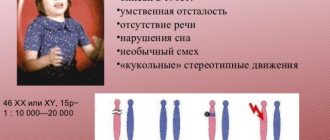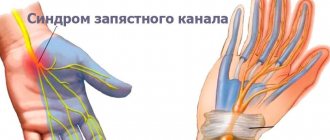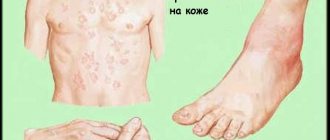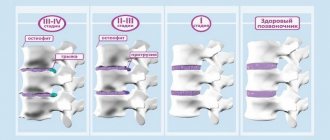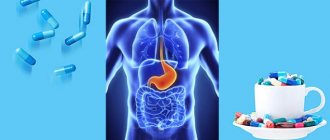Raynaud's syndrome is a pathological condition known to medicine since 1862. It is based on a paroxysmal spasm of the blood vessels of the peripheral limbs and face. A spasm occurs, for example, in response to exposure to cold, vibration or severe stress. As a result, a person feels pain at the site of the spasm, numbness, and a crawling sensation appear. The affected area initially turns white and then turns blue. The skin becomes cold to the touch. When the attack ends, the skin turns red and the area feels hot. With the long-term existence of the disease, trophic disorders develop. To confirm the diagnosis, a thorough examination of the patient using instrumental research methods is necessary. Treatment of Raynaud's syndrome is complex and requires the use of medications and physiotherapeutic methods. Sometimes surgery is even advisable. Let's talk in more detail about the causes, symptoms, diagnostic methods and treatments for Raynaud's syndrome.
It is no coincidence that the disease is called Raynaud's syndrome. "Raynaud's" is named after the French physician Maurice Raynaud, who first described this condition. But the term “syndrome” in relation to this situation is collective in nature, since it reflects the following fact: clinical manifestations are most often the result of other diseases. And there are a lot of such diseases (according to the latest data - more than 70). Along with the wording “Raynaud’s syndrome,” in medicine there is the concept of “Raynaud’s disease.” Raynaud's disease has the same clinical signs as the syndrome, but it occurs for no apparent reason (or so they say when the cause cannot be determined), that is, it is a primary condition. According to statistics, Raynaud's disease accounts for about 10-15% of all cases, and the syndrome accounts for 85-90%. Therefore, the term “syndrome” is used much more often than “disease”.
Causes
The phenomenon got its name from the name of the French doctor who discovered it. This happened in 1862. One of Maurice Reynaud’s patients came to him with complaints of frequent sudden pain and loss of sensation in her fingers. After examining her, the doctor began a detailed study of this phenomenon. He made a complete description of Raynaud's disease and systematization of all identified signs using the example of different patients.
Symptoms appear under the influence of certain factors. The French doctor named cold as one of the main reasons for numbness in the fingers of the girls examined. His patients constantly rinsed their clothes with their hands in ice water. It is exposure to cold that most often provokes vasospasm. Moreover, this happens not only during prolonged contact with a cold environment, but also during short-term exposure to low temperatures.
Subsequently, other factors were established: stress (the influence of strong emotions) and professional (associated with the impact of various vibrations or chemicals on the limbs).
The true cause of Raynaud's disease (primary pathology) could not be accurately determined. There is an assumption that the disorder is associated with the genetic characteristics of blood vessels that react with spastic contractions to certain stimuli.
Sudden spasms in peripheral vessels can be caused by dysfunction of certain parts of the brain, as well as the spinal cord, as a result of which the conduction of nerve signals that control the activity of blood vessels is disrupted.
There may be several direct causes of the development of Raynaud's phenomenon (a secondary pathology of a symptomatic nature). Here is a list of the most common ones:
- Inflammatory processes in the walls of blood vessels associated with connective tissue diseases: rheumatoid arthritis, systemic lupus erythematosus, scleroderma, Sjogren's disease, periarteritis nodosa and other similar pathologies.
- Vascular diseases causing Raynaud's syndrome: Takayasu's disease, atherosclerosis obliterans, thrombophlebitis, Wegener's disease.
- Blood cell diseases: multiple myeloma, cryoglobulinemia, thrombocytosis.
- Pathologies of the endocrine system: adrenal glands, thyroid gland, polyneuropathy in diabetes mellitus.
- Oncological diseases: pheochromocytoma, paraneoplastic syndrome.
- Neurogenic causes of Raynaud's syndrome: diseases of the central nervous system accompanied by plegia, algodystrophy, carpal tunnel syndrome, damage to the intervertebral discs.
- Injuries to the fingers of the extremities.
- Side effects of certain medications that constrict blood vessels. They are usually prescribed for long-term use for hypertension: Metoprolol, Nomigren, Propranolol, Syncapton. Raynaud's syndrome can also be caused by drugs used against tumor formations: Vincristine, Cisplatin.
Raynaud's disease - causes
Doctors have not yet determined the exact origin of the presented vascular disorder. There are factors that provoke Raynaud's disease - the reasons that presumably cause the pathology:
- professional activity;
- frequent and prolonged hypothermia of the extremities;
- rheumatic and endocrine diseases;
- mechanical damage to fingers;
- changes in the rheological properties of blood;
- chronic stress;
- severe infections;
- congenital insufficiency of the lateral horns of the spinal cord;
- diseases of the peripheral nervous system;
- adrenal dysfunction;
- local defects of blood vessels in the fingers;
- vasospasms of the coronary arteries.
Symptoms
You can feel and see the manifestation of Raynaud's syndrome both on the fingers (most often) and on the toes, as well as on the tip of the nose or tongue, in the chin area.
As Raynaud's disease progresses, there are three stages of its development:
- Angiospastic. The attack lasts several minutes (less often several hours). One or more fingers are affected. The skin becomes numb, changes color, and becomes cold. Spasms occur under the influence of provoking factors. At the end of the attack, the skin warms up and returns to its original state.
- Angioparalytic. Attacks become more frequent, can occur without the influence of external factors, and their duration increases. The affected area expands, it spreads to other fingers, the tip of the nose, ears, and chin.
- Atrophoparalytic. Attacks occur regularly, do not go away for a long time, deep lesions appear in the skin layer, dead zones may appear, the fingertips become inflamed and covered with ulcers. In severe cases, gangrene develops.
Typically, either the second and third fingers of the hands, or the first to third fingers of the feet are affected. The transition from one stage of Raynaud's disease to another takes a long time. The first two stages can last up to five years.
The disease is registered at any age, it is characterized by symmetry of the affected areas of both hands, and, as a rule, it does not lead to serious consequences. In many cases, Raynaud's disease does not progress beyond the first or second stage.
With Raynaud's syndrome, there is no symmetry, pathological changes occur more frequently, and the progression of the pathological condition is accelerated. In addition to necrosis of the arms or legs, patients with Raynaud's syndrome often complain of changes in blood pressure, pain in the heart and abdomen, back and head. Possible problems with sleep. Raynaud's syndrome usually occurs at a young age.
How to treat Raynaud's disease?
Therapy of the pathology in question is carried out by conservative and surgical methods. The first option is suitable if uncomplicated Raynaud's disease is diagnosed - treatment is limited to relieving symptoms and improving well-being. This approach involves long-term and often lifelong therapy. Surgery is prescribed for severe stages of the disease, when its progression is fraught with amputation of limbs and other dangerous consequences.
Raynaud's disease - which doctor should I contact?
First, it is advisable to visit a therapist for a general examination and medical history. A general practitioner will tell you which specialist treats Raynaud's disease:
- neurologist;
- vascular surgeon;
- neurologist.
Raynaud's disease - treatment, drugs
When choosing drug therapy, the doctor prescribes:
- antispasmodics – Papaverine, Spasmonet, Buscopan;
- adrenergic blockers (central and peripheral) – Doxazosin, Prazosin, Zoxon;
- vasodilators - Pentoxifylline, Theobromine, Piracetam;
- ganglion blockers – Imekhin, Pirilene, Temekhin;
- tranquilizers – Atarax, Diazepam, Phenazepam;
- calcium blockers – Amlodipine, Nifedipine, Felodip;
- antidepressants – Azafen, Prozac, Befol;
- cyclooxide inhibitors – Methindol, Indomethacin, ascorbic acid;
- non-steroidal painkillers - Ketanov, Naproxen, Ibuprofen;
- anti-inflammatory medications - Movalis, Nalgesin, Diclofenac,;
- antibiotics – Erythromycin, Clindamycin, Ciprofloxacin;
- vitamins – nicotinamide, rutin, nicotinic acid.
You can independently reduce the severity of clinical manifestations of pathology and reduce attacks of vascular spasms. Here's how to treat Raynaud's disease at home:
- Eat nutritiously and regularly.
- Monitor the normal temperature of the extremities, avoiding hypothermia.
- Rest, maintain optimal wakefulness and sleep patterns.
- Avoid excessive emotional stress.
- Give up bad habits, especially smoking.
- Do exercises for your arms and legs every day.
- Massage the limbs.
Raynaud's disease responds well to the following physiotherapeutic methods:
- darsonvalization;
- ultraviolet irradiation;
- electrophoresis with lidase or calcium;
- diathermy;
- galvanic baths;
- acupuncture;
- vacuum, laser and magnetic therapy.
Raynaud's disease - treatment with folk remedies
Alternative medicine has several options for restoring normal blood circulation in tissues. The best method to treat Raynaud's disease with folk remedies is healing pine baths. You need to take water at a temperature of about 37 degrees and add 7-10 drops of fir essential oil to it. You should relax in such a bath for 10-15 minutes. During the procedure, you can do a light finger massage and deeply inhale the aromatic vapors.
Medicinal tincture
Ingredients:
- dry rhizomes of Leuzea – 15 g;
- cold water – 500 ml.
Preparation, use:
- Finely chop the plant material.
- Pour ice water over the roots and leave for half an hour.
- Place the workpiece on the stove and bring to a boil.
- Cook the product for 2-5 minutes.
- Cover the container with a lid and leave the solution for 2 hours.
- Filter the liquid.
- Drink 90-100 ml of the drug 5 times a day.
- Continue therapy for 2 weeks.
Tea to improve blood circulation
Ingredients:
- fresh strawberry leaves – 40-45 g;
- boiling water – 300-350 ml.
Preparation, use:
- Grind and lightly knead the raw materials.
- Pour boiling water over the leaves and leave for 5-15 minutes.
- Drink 150-180 ml of tea 2 times a day, you can sweeten it with jam or honey.
Raynaud's disease - surgery
The described pathology cannot be completely cured, therefore, even with strict adherence to all recommendations and properly selected treatment, it progresses slowly. The only way to eliminate Raynaud's disease is surgery. The operation (sympathectomy) removes or “turns off” damaged nerve fibers that provoke spasms of blood vessels. Modern surgeons use endoscopic equipment to perform the procedure, as it helps to achieve excellent results with minimal trauma.
What happens during an attack
The whole process can be divided into three phases:
- The skin of the fingers turns white. Blood is not supplied in the required quantity. Fingers are cold.
- Skin color changes to blue with a purple tint. Blood stagnates in the veins during a spasm, they become overfilled. The blue color comes from the blue tint of the veins themselves.
- The affected areas turn red. The spasm goes away, the blood vessels dilate, and blood flows to the affected tissues. My fingers are getting warm.
Then the skin returns to its original appearance. It is not always possible to observe all three phases, and they continue in different ways in different cases.
In parallel with the change in skin color during an attack, the following symptoms of Raynaud's disease occur:
- Numbness – it occurs due to poor blood supply to the extremities. Blood flows slowly and in small quantities. There is not enough oxygen and nutrients, which causes loss of sensitivity.
- Painful sensations - the cause is the same: the delivery of oxygen and nutrition to the tissues is limited, metabolism is disrupted. The pain may be tingling or intense.
- The lack of blood supply also explains such symptoms as chilliness and coldness in the fingers.
Diagnosis of Raynaud's syndrome
Since Raynaud's syndrome often occurs against the background of rheumatic and autoimmune diseases, laboratory research methods aimed at identifying them become important. The following types of tests are taken (for more details, see rheumatological examination):
- general blood test (increased ESR, decreased hemoglobin, leukopenia and thrombocytopenia are important);
- biochemical blood test (with Raynaud's syndrome, significant changes, as a rule, are not detected);
- coagulogram;
- general urine analysis;
- immunological blood tests (level of immunoglobulins, rheumatoid factor, cryoglobulins, various autoantibodies, for example, antinuclear antibodies, antibodies to DNA).
Diagnostics
To diagnose Raynaud's phenomenon, the doctor is guided primarily by the patient's own complaints. Cold testing is also used: the limbs are immersed in a cold environment for several minutes and the degree of changes that occur is visually assessed.
Additional examination methods:
- Capillaroscopy - it allows you to determine how affected the vessels are.
- Immunological analysis. Includes: study of blood immunoglobulins, specific and nonspecific antibodies, rheumatoid factor, immune complexes that are present in the blood. This method can determine the reason why Raynaud's phenomenon occurred.
- X-ray of the chest area.
- Oscillography, angiography, Dopplerography, digital plethysmography.
- General blood and urine analysis.
- Biochemistry of blood.
- Coagulogram.
- Blood test for thyroid hormone levels
Treatment of the patient will depend on the cause of the pathology, so it is important to distinguish between two conditions: syndrome and Raynaud's disease.
To differentiate, you need to answer the following questions:
- What is the age at onset of the disease?
- Do you have connective tissue diseases?
- Is there symmetry of the affected areas on both limbs?
- Is the microvascular pattern of the affected area altered? (based on capillaroscopy results).
- Is ESR (erythrocyte sedimentation rate) elevated or normal?
- Is such a symptom identified in Raynaud's disease as dead tissue?
- Is the presence of antinuclear antibodies detected? (based on the results of ELISA (enzyme-linked immunosorbent assay) of blood).
- Are spasmodic contractions noted in the lungs or kidneys?
- Is the blood flow rate reduced? (based on the results of Doppler flowmetry).
What kind of disease?
With Raynaud's disease, the vessels sharply spasm (contract), and damage occurs to small arteries, the walls of which contain smooth muscle tissue. This disease is associated with impaired vascular tone, called angiotrophoneurosis. Damage to the blood vessels of the fingers occurs symmetrically, sometimes impaired microcirculation causes pallor of the nose, lips, ears, and feet. This condition can be caused by stress, minor hypothermia, when a person is under the influence of air conditioning, puts his hands in cold water, or touches cold objects.
If cooled areas of the body are heated, they will remain cool for some period.
to contents ^
Treatment
This should be first aid when Raynaud's phenomenon manifests itself as a sudden attack:
- If the attack is caused by stress, you need to take a sedative.
- The numb area must be warmed by any means: a bath with warm (not hot!) water, warming tea, a rubbing massage.
- Take a drug that eliminates spasms: “No-spa”, “Platifillin” and others.
- An analgesic will help relieve pain.
Raynaud's phenomenon is treated both medically and surgically.
Drug treatment
- ACE inhibitors (angiotensin-converting enzyme) - Capoten, Captopril.
- Means that improve the quality of blood and microcirculation - “Dipyramidol”, “Agapurin”.
- Prostaglandins – “Alprostan”, “Caverject”.
- Serotonin blocker - Ketanserin.
- Calcium channel blockers - Nicardipine, Isoptin, Nifedipine.
- Alpha adrenergic blockers - “Prazosin”.
- Phosphodiesterase type 5 inhibitors - Sildenafil, Tadalafil.
When treating Raynaud's syndrome, you will have to take medications for life. Such therapy cannot do without consequences for other organs of the body due to the presence of side effects.
Surgical intervention is reduced to performing a sympathectomy. This is an operation during which the nerve fibers of the sympathetic trunk, which provoke vasoconstriction, are eliminated (cut). It is possible to apply clips to the area of the sympathetic trunk in the thoracic or cervical region. This type of operation is performed when Raynaud's syndrome is characterized by a severe course. The effect of the performed manipulations does not always last long. Symptoms may return after a few months. The help of a surgeon will also be required if gangrene has developed.
In addition, treatment of Raynaud's disease involves the use of additional methods:
- physiotherapy (electrophoresis with Eufillin, Papaverine; radon, sulfide baths; magnetic therapy; laser treatment; transcranial electrical stimulation);
- massage;
- psychotherapy sessions;
- acupuncture;
- hyperbaric oxygen therapy;
- mud treatment;
- Exercise therapy (physical therapy);
- ethnoscience.
Treatment and care
Today, unfortunately, there is no clear treatment for Raynaud's phenomenon, but treatment methods can reduce the number of attacks and their severity.
Among the approaches that have proven to be most effective are:
- lifestyle changes;
- drugs;
- in rare cases, surgery.
Most patients with primary Raynaud's can manage the disorder through lifestyle changes. Additionally, people with secondary Raynaud's will likely have to resort to drug therapy and will only rarely be evaluated for surgery or injection therapy.
If you suffer from Raynaud's syndrome and suffer from sores on your fingers, toes, or other areas, see your doctor immediately. Prompt treatment will help you avoid permanent injuries.
Lifestyle changes
By changing your lifestyle, the patient will probably be able to avoid the factors and situations that cause attacks, such as:
- low temperatures;
- emotional stress;
- certain substances present in the workplace and everyday environment;
- contact with certain chemicals or drugs.
Protect yourself from the cold
To protect yourself from the cold:
- When it's cold, wear a hat, mittens (instead of gloves), a scarf, comfortable clothes with cuffs, warm socks and shoes. To stay warm, dress in layers.
- Buy a hand or foot warmer and carry it in your mittens, boots, socks or pockets. These small heating pads can be purchased at sporting goods stores.
- When you are in an air-conditioned room, try turning off the air conditioner or dressing warmly.
- Warm up your car well before driving in cold weather.
- When you take something out of the refrigerator or freezer, wear gloves or mittens (if you have serious problems with the cold).
Stem cell treatment
Effective treatment of Raynaud's disease is facilitated by the newest method of using stem cells. Using this method, the progression of Raynaud's syndrome can be stopped. To restore blood circulation in the peripheral vessels of the extremities, stem cells do double duty:
- Firstly, they reconstruct the damaged vessel from the inside, and also create new collateral vessels.
- Secondly, stem cells replace nerve cells that have been damaged. As a result, their complete degeneration occurs.
This therapy ensures complete restoration of nerve fibers destroyed by a lack of nutrients and oxygen. Blood circulation returns to normal.
The source of stem cells is bone marrow; cells extracted from there are grown in a specialized laboratory.
Preventive measures will help make life easier for a person with Raynaud's syndrome. They consist in eliminating provoking factors: do not overcool, be less nervous, and avoid exposure to aggressive substances on the skin of your hands.
The patient has to change working conditions, climate zone, and get rid of bad habits. Sometimes taking such measures leads to complete disappearance of symptoms, Raynaud's disease goes away.
Diagnostics and list of tests
Diagnosis of Raynaud's disease involves a very important step: routine questioning and examination of the patient, as well as provocative tests with cooling. When a doctor sees with his own eyes an episode of ischemia of the capillaries of the hands, this allows him to make an accurate diagnosis.
Auxiliary diagnostic methods are:
- Ultrasound of vessels of the extremities;
- Computed contrast angiography of the extremities, with a particularly close assessment of the distal capillary network in the fingers. Attention is drawn to the development of the anastomotic network;
- Carrying out capillaroscopy of the nail bed to look for microcirculation disorders;
- Carrying out Doppler laser flowmetry with accompanying functional tests.
What is laser flowmetry? In this completely painless research method, tissues are probed with a laser beam. The beam hits stationary tissue and moving blood. After being reflected, it comes back.
Based on the frequency shift in the radiation returned to the receiver, a special curve is built that obeys many rules. Based on the analysis of this curve, a conclusion is drawn about the presence and nature of disorders of peripheral capillary hemodynamics.
Differential diagnosis is of great importance, that is, searching for the cause of Raynaud's syndrome (for example, when its symptoms occur atypically in men over 40 years of age). Here you can conduct the most large-scale studies, with the involvement of various specialists - from oncologist to endocrinologist.
How does the syndrome differ from a disease with the same name?
There is no clear boundary between the concepts of disease and Raynaud's syndrome, which are united by a common name; the symptoms accompanying the 2 processes presented are almost identical.
In many cases, the syndrome is synonymous with the disease. There is one central point by which one can judge the presence of a syndrome or disease.
Raynaud's disease makes itself felt as an independent form, and the syndrome manifests itself in parallel with some other disorders in the body, that is, it is secondary in nature.
Raynaud's syndrome makes itself felt if it is accompanied by pathologies such as:
- Systemic scleroderma, lupus erythematosus, rheumatoid arthritis.
- Scalenus syndrome.
- Atherosclerosis.
- Osteochondrosis.
- Conditions in which blood viscosity increases.
- Pathological conditions of the central nervous system.
The fundamental factors that determine the development of this disease are excessive energy of the vasomotor centers and local damage to the muscular vascular wall.
Under normal conditions, the reflex process to the effects of cold is accompanied by the fact that the lumen of small vessels decreases.
This happens to reduce the volume of blood flowing to the body and reduce heat transfer.
In pathology, this function is disrupted, the mechanisms that lead to changes in the presented function are not clearly understood, and a large role is assigned to a variety of factors of the external and internal environment.
The causes will be endocrine pathologies, which are manifested by various diseases of the thyroid gland, pituitary gland, and adrenal glands. Infectious and viral diseases, stress, and emotional stress play a certain role.
Alternative medicine
For Raynaud's syndrome, treatment with folk remedies will help improve microcirculation of the distal parts of the fingers, toes, nose and chin, and relieve vascular spasm. However, it can only be used as adjunctive therapy. You should definitely consult with a specialist first to prevent complications from occurring.
The most effective recipes for alternative medicine:
- Pine decoction. To prepare it, you should finely chop the needles of a young tree, add 5 tbsp. l. honey, 3 tbsp. l. onion peels, as well as about 2-3 tbsp. l. rosehip berries. Pour hot water over all ingredients, bring to a boil and simmer for 10-15 minutes. The product should sit overnight. It is advisable to pour the solution into a thermos to ensure the required temperature. In the morning, strain the medicine and drink 0.5 cups several times a day. It must be remembered that the decoction is not recommended for use in patients with pathologies of the stomach and pancreas.
- Fir baths. You need to take water at a temperature of 38° C and add 5-7 drops of oil to it. The duration of the patient's stay in the bathroom is at least 15 minutes. The recommended course of water procedures is 10-15 sessions.
- Fir oil for oral administration. Squeeze a couple of drops onto a piece of bread and swallow without chewing, since the substance negatively affects tooth enamel.
Folk remedies for Raynaud's disease
- Take fir baths. You need to mix 5-6 drops of fir oil with base oil (olive, peach, corn) and pour them into a prepared bath with water at a temperature of 37 ° C. Bath time is 15 minutes. It is necessary to do 15-20 baths per 1 course.
- Siberian recipe: eat a piece of bread with drops of fir oil in the morning.
- Cut off the bottom two to three leaves of a three-year-old aloe plant and chop them. Squeeze out the pulp and soak the gauze bandages with aloe juice. Apply bandages to the affected areas of the body and leave for several hours. A pre-massage of the limbs will help increase the effectiveness of the procedure.
- Take fresh onion juice and honey (mix in 1:1 ratio). Take 1 teaspoon 3-4 times a day.
The following will help you endure severe attacks more easily:
- warming the affected limb in warm water or woolen cloth;
- soft massage;
- warming drink.
Stages of the disease
Raynaud's disease manifests itself in attacks, each attack lasting a certain time, approximately 15-20 minutes. In rare cases, when the disease has already progressed, the attack can last several hours.
Each such manifestation has several stages:
- At the first stage of the attack, a person experiences coldness at the tips of the limbs. This occurs due to the outflow of blood from the blood vessels.
- In the second stage, blue or pale skin appears on the tips of the arms and legs. This reaction occurs due to a lack of oxygen in the blood. Spasm and narrowing of blood vessels does not allow sufficient oxygen to enter the blood.
- The third stage is the final process of the attack. At this stage, blood circulation is restored. The skin turns red and a large amount of blood enters the extremities. Changes in skin color occur symmetrically. Both arms or legs become cold, blue and numb equally. Timely administration of certain medications can shorten the duration of an attack and reduce its intensity.
Raynaud's disease has 3 stages of development.
Each stage provokes the appearance of additional symptoms:
- Stage 1 is called angiospastic.
- Stage 2 is called angioparalytic.
- Stage 3 is called trophoneuropathic.
During the angiospastic stage , the walls of small arteries and arterioles become thinner, which does not allow them to maintain normal vascular tone.
Angioparalytic more strongly destroys blood vessels, leading to degeneration of nerve endings. Partial death of nerve cells occurs, and the patient’s sense of touch is impaired.
During the trophoneuropathic stage, complete loss of vascular innervation occurs. The blood supply to the extremities is completely disrupted, and this process can only be restored through the use of medications. This prevalence of the disease leads to the formation of trophic ulcers and sometimes gangrene.
Therapy of the disease
With Raynaud's disease, symptoms and treatment are closely related. First of all, it is necessary to establish the cause that caused the development of the pathology. After all, you can’t just treat the symptoms. To achieve a positive result, therapy must be comprehensive. An important role is played by the exclusion of provoking factors.
How to treat Raynaud's syndrome? The answer to this question can only be given by a doctor based on a thorough examination of the patient, laboratory and instrumental studies. With Raynaud's syndrome, symptoms and treatment must be coordinated. An individual therapeutic regimen is developed based on clinical manifestations, frequency of attacks, their duration and predominant symptoms.
Treatment of Raynaud's disease is aimed at reducing discomfort, normalizing blood circulation, improving the delivery of nutrients to the distal parts, and preventing ischemia in the phalanges of the fingers. For this purpose, the following groups of drugs are used:
- Antispasmodics. The most affordable and popular remedy is No-shpa. Papaverine hydrochloride has a good effect.
- Analgesics and NSAIDs. They relieve discomfort and help reduce the inflammatory process in blood vessels. These include Analgin, Ibuprofen, Diclofenac, Ketorol and their analogues.
- Antibacterial agents. Application is advisable in case of microbial infection. Depending on the patient’s condition, the doctor may prescribe antibiotics for local use (Baneocin, Levomekol, etc.) or systemic action (broad spectrum).
- Vitamins. They are an important part of complex treatment, as they help normalize blood circulation and provide the body with all the necessary nutrients. It is most convenient to use multivitamin preparations - Biomax, Complivit, etc.
Only the attending physician can develop an individual therapeutic regimen. Many medications have a number of contraindications for use and side effects that must be taken into account when prescribing a particular drug.
The disease can be treated using physiotherapeutic methods. Good results are obtained by using darsonvalization and UV irradiation of the cervical and lumbar spine, which are responsible for the innervation of blood vessels in the area of the tips of the fingers and toes. In some cases, a course of electrophoresis with calcium or Lidase, as well as diathermy and galvanic baths may be recommended.
Raynaud's syndrome requires long-term conservative treatment over several years. If there is no positive result from the therapy, surgical intervention may be performed to remove the nerve fibers responsible for arterial spasm.
Raynaud's syndrome of the upper and lower extremities - what is it?
Raynaud's disease is characterized by coldness of the tips of the toes and hands. Typically, attacks occur infrequently, sometimes once every six months, especially if the disease is at an early stage. Progression of Raynaud's syndrome leads to more serious complications.
This disease is mainly common in temperate climates . Hot and cold areas of the earth do not predispose to cases of Raynaud's disease. Raynaud's syndrome occurs due to a disease of the arteries of a functional nature.
Children and adolescents are practically not susceptible to this disease.
Self-treatment of Raynaud's syndrome is unacceptable, as this may worsen the situation. To prescribe adequate treatment, the doctor performs a series of diagnostic procedures that demonstrate the clinical picture of the disease.
Prevention
- exclude the effect of low temperatures on the limbs;
- limiting stress and emotional experiences;
- to give up smoking;
- restriction in the consumption of alcoholic beverages;
- food enriched with vitamin C and Ca (to strengthen the walls of blood vessels);
- vibration protection; change of workplace due to the action of a mechanical factor of injury;
- examination and observation by a doctor at least once a year.
Description of the disease
To put it briefly and simply, the essence of this disease lies in problems with the blood supply to the most remote areas of the vascular system. This is clearly visible in the photo of the manifestation of Raynaud's disease, especially on the hands.
Raynaud's disease is an autonomous problem that does not act as a symptom, which is not the case with Raynaud's syndrome. The latter is not an independent disease, which is evident from its name.
It usually manifests itself against the background of some more serious disease, such as systemic lupus erythematosus, which has a number of its own health threats.
What to do with secondary Raynaud's syndrome?
Treatment of secondary Raynaud's syndrome is to a small extent aimed at eliminating symptoms; the main point of therapy is identifying and eliminating the diseases that influenced the occurrence of this process.
Medications are important in the treatment of this secondary form of the disease, but auxiliary methods must be used to improve the effect. Various warm limb wraps, baths with decoctions of medicinal herbs and compresses can significantly improve the treatment of the disease.
Prognosis and possible complications
The prognosis for Raynaud's disease is quite favorable, especially if treatment is started from stage I. Stage II of the disease also does not pose a threat to life, but significantly reduces its quality.
If treatment is not started on time or the patient ignores the specialist’s instructions, then his condition worsens, and attacks become more frequent and prolonged. When the disease moves to stage III, the patient experiences complications such as the formation of skin ulcers and tissue necrosis. As a result, the patient will face amputation of the limbs.
Causes and symptoms
You should know that Raynaud's disease is different from Raynaud's syndrome. The disease is independent in nature, and the syndrome is a manifestation of this disease due to the influence of other ailments.
Causes of Raynaud's syndrome
- Systemic diseases such as SLE and scleroderma
- Rheumatoid arthritis
- diseases (atherosclerosis)
- Diseases that increase blood viscosity
- Side effects from taking medications
- Endocrine system diseases
- Nervous disorders
Many diseases can trigger the appearance of signs of Raynaud's syndrome. It is necessary to accurately determine the cause of such symptoms in order to prescribe adequate treatment. In most cases, attacks of Raynaud's syndrome disappear without a trace if the primary cause is eliminated.
Signs of Raynaud's syndrome
- Increased sensitivity of the extremities to cold
- Cramps in the arms and legs
- Pain in the limbs for unknown reasons
There are cases when the provocation for the appearance of Raynaud's syndrome is smoking or alcoholism. Nicotine and alcoholic beverages negatively affect blood vessels, disrupting the activity of the entire circulatory system.
Stress and emotional stress can also cause symptoms of this disease. With this disease, not only the limbs are affected; in rare cases, discomfort can affect the tip of the nose, tongue or ears.
Diagnostic tests
The diagnosis is usually established during the first visit to the doctor based on the patient’s complaints. To do this, it is enough for an experienced specialist to evaluate the external symptoms:
- increased sensitivity of fingers to cold;
- change in skin color of the fingertips from normal to white and bluish when cooled.
The photo shows hands in the stage of cyanosis (the color of the fingertips is due to the high content of carbon dioxide in the blood).
Next, the nature of the pathology (primary or secondary type) is clarified. For this purpose it is clarified:
- does the patient have problems with connective tissue (skin pathologies, arthritis, myalgia, cardiac and pulmonary diseases);
- whether the patient underwent chemotherapy shortly before the onset of the syndrome;
- whether the patient’s work and leisure activities are associated with vibrations of the hands and feet.
The methods used to diagnose Raynaud's syndrome are divided into general and instrumental. The first group includes:
- blood test (clinical and biochemical);
- immunological blood test, clotting test;
- studying the medical history to identify diseases that provoke Raynaud's syndrome or have similar symptoms.
Instrumental examination allows you to detect concomitant diseases and assess the condition of the capillaries. The most informative among them:
- ultrasound examination of the thyroid gland;
- X-ray or MRI of the cervical spine;
- capillaroscopy (a method that allows you to identify changes in the capillary structure and disturbances in the blood supply to the fingers and toes);
- laser Doppler vascular flowmetry (to determine the intensity of skin blood flow);
- rheovasography;
- color Doppler scanning (method of visual examination and measurement of the diameter of the digital artery);
- thermography (estimation of blood flow based on the time it takes to restore skin temperature after cooling);
- plethysmography (to measure blood pressure in the arteries of the fingers).
Instrumental and laboratory methods for differentiating the primary and secondary nature of the syndrome make it possible to establish a final diagnosis, the severity of the disease and prescribe effective treatment.
